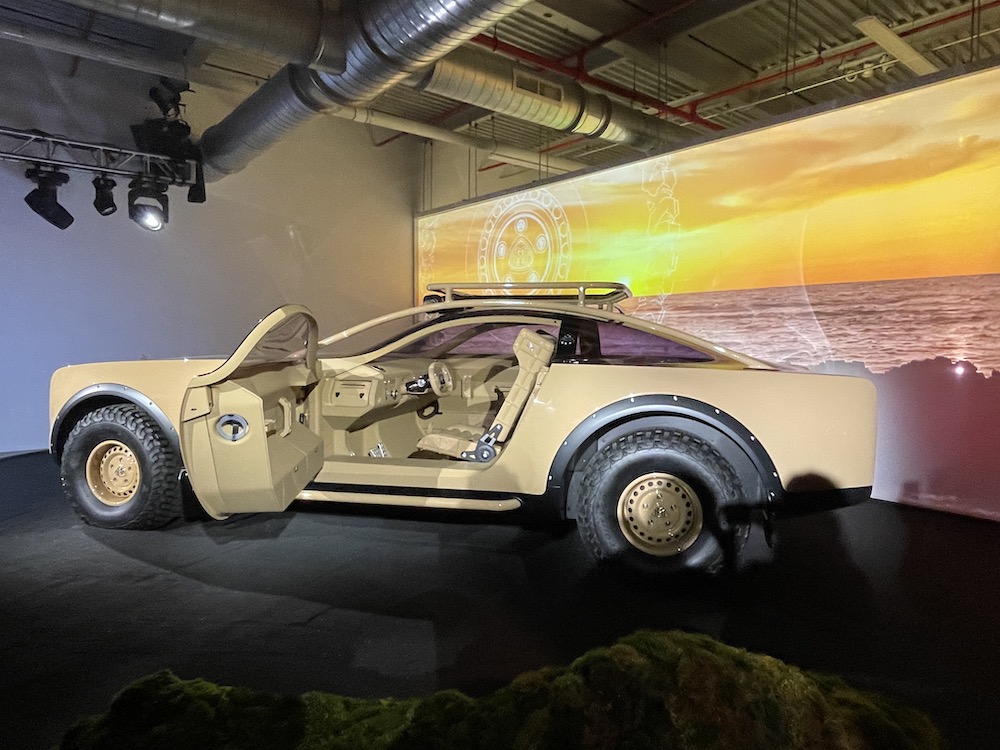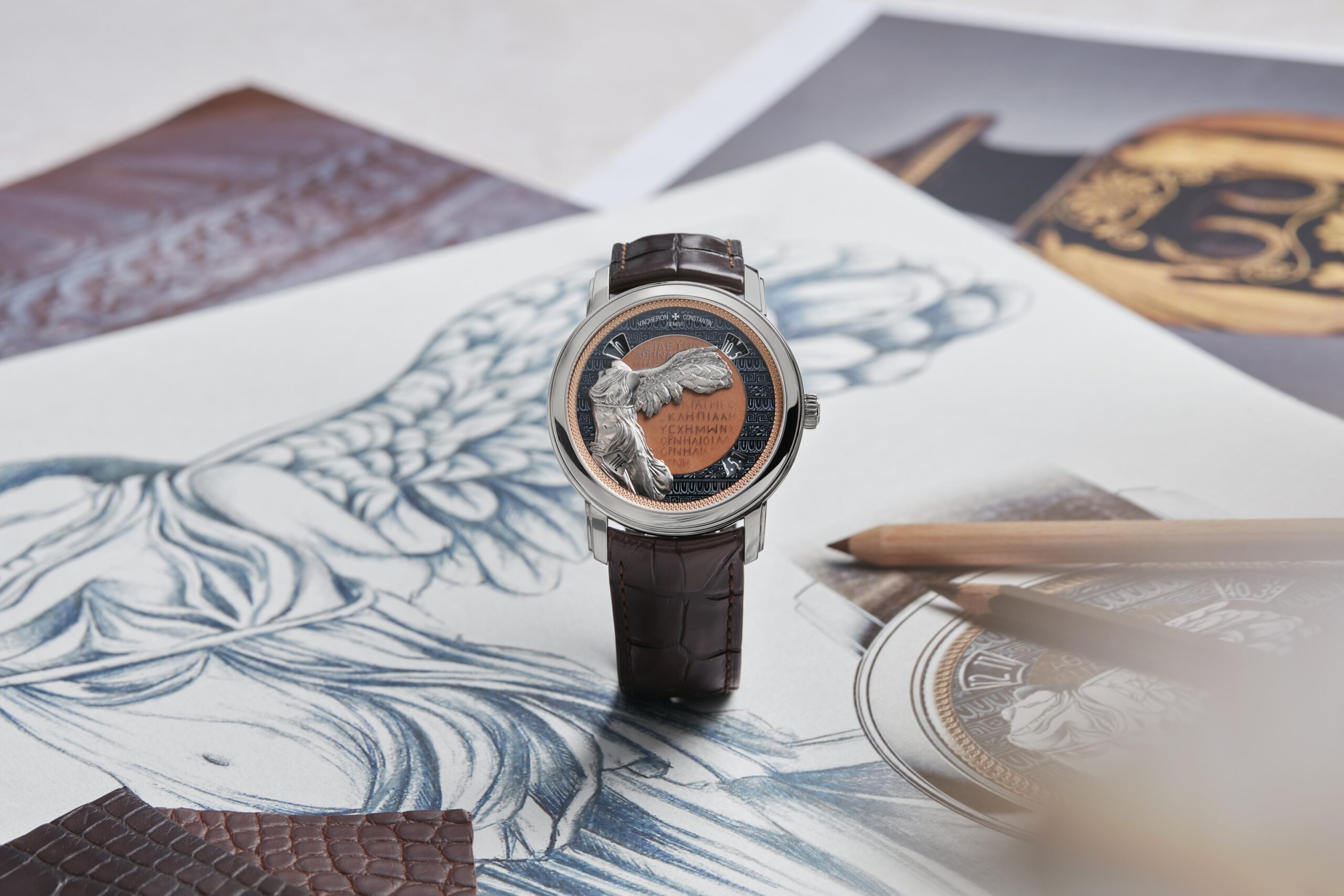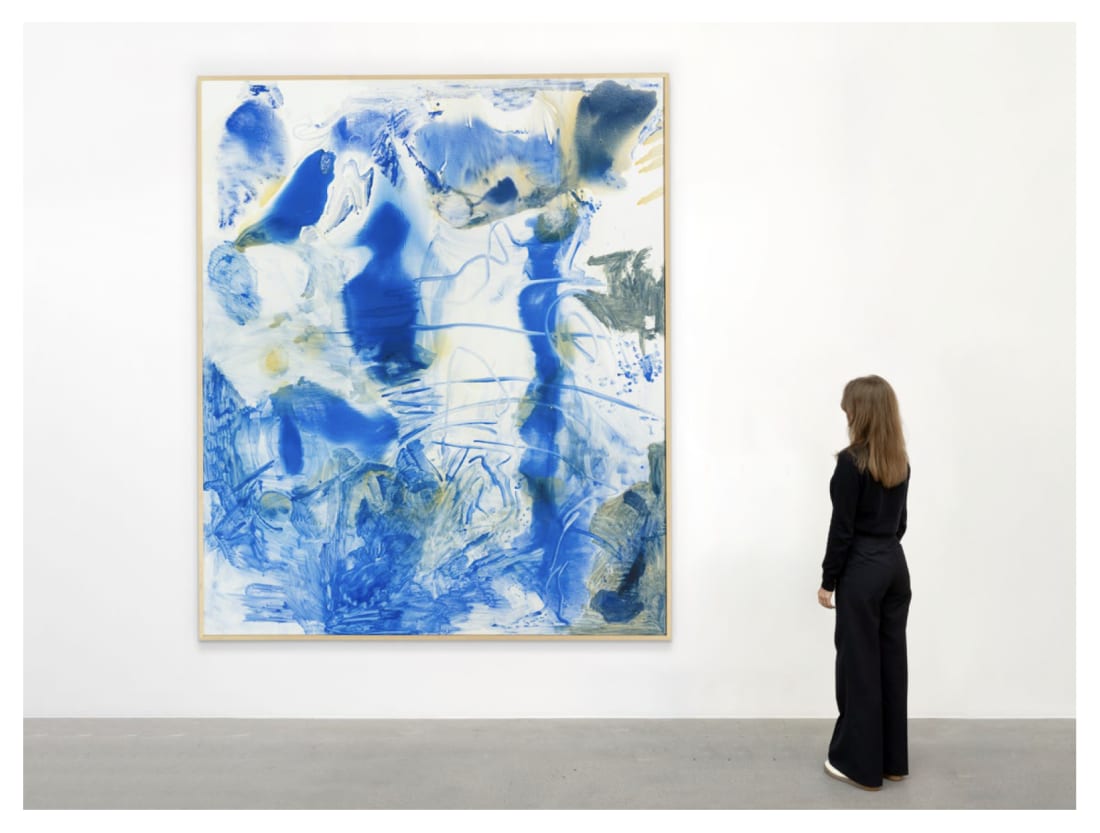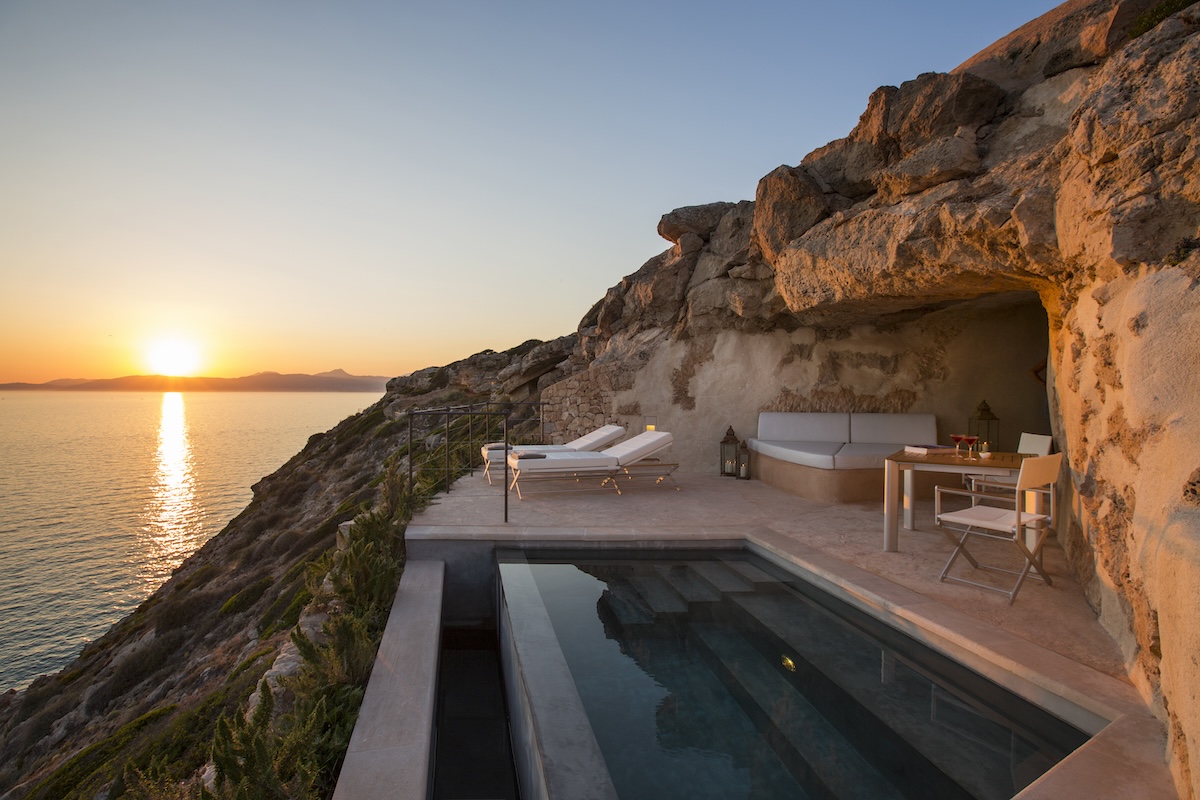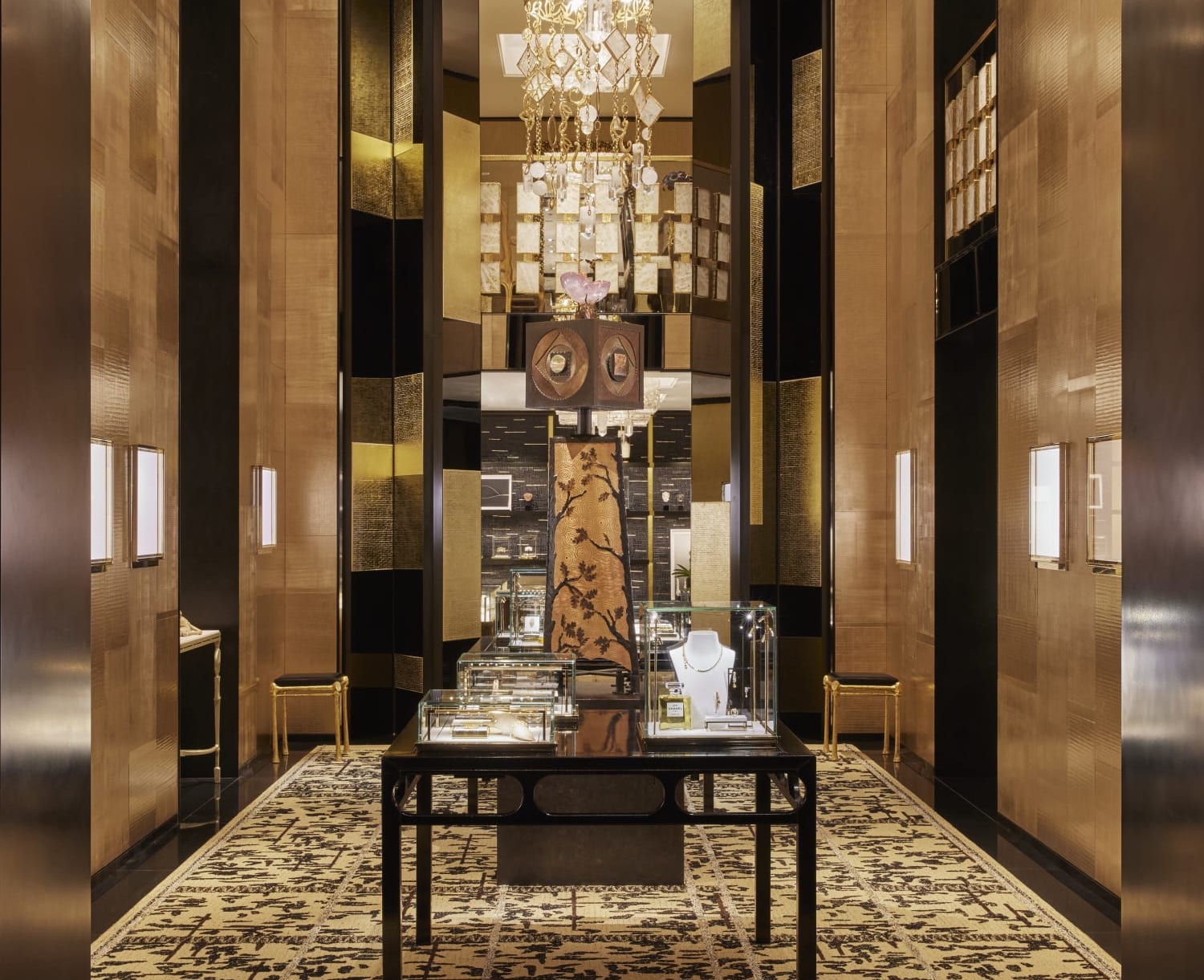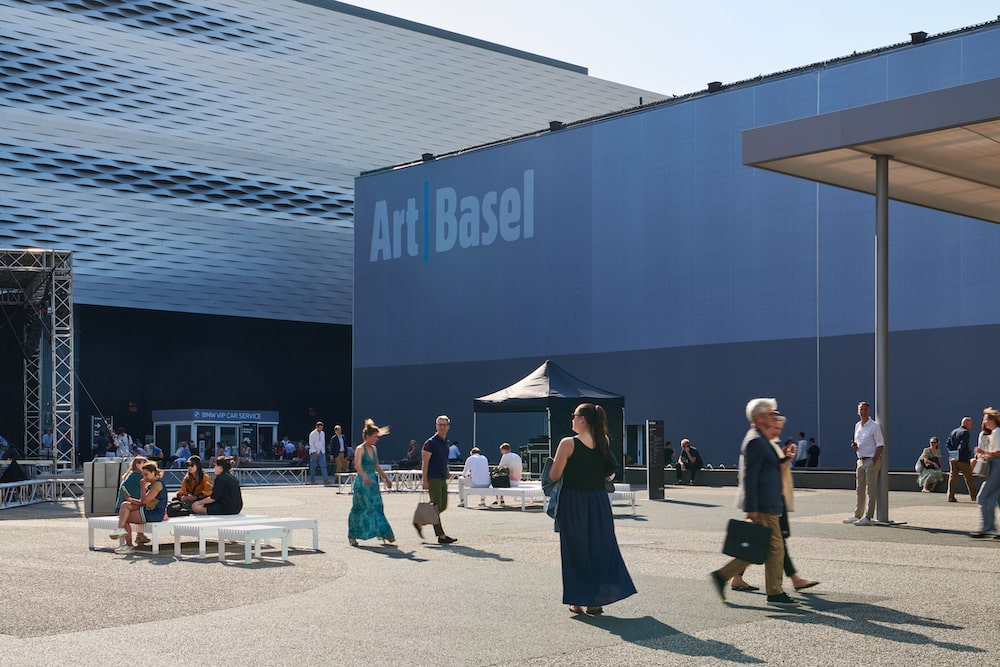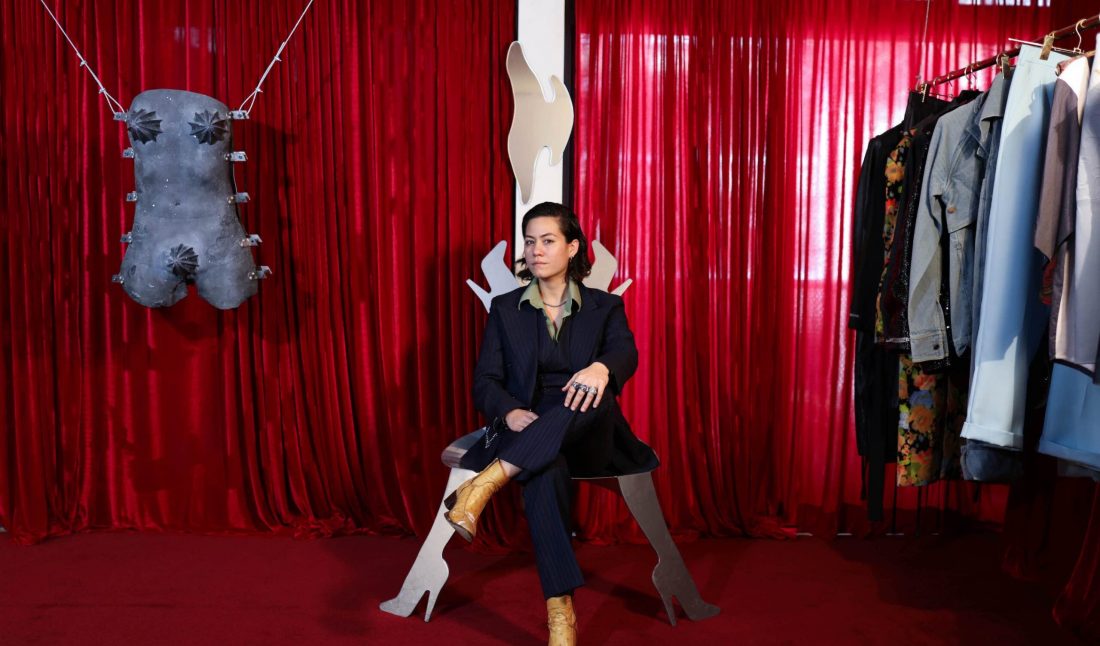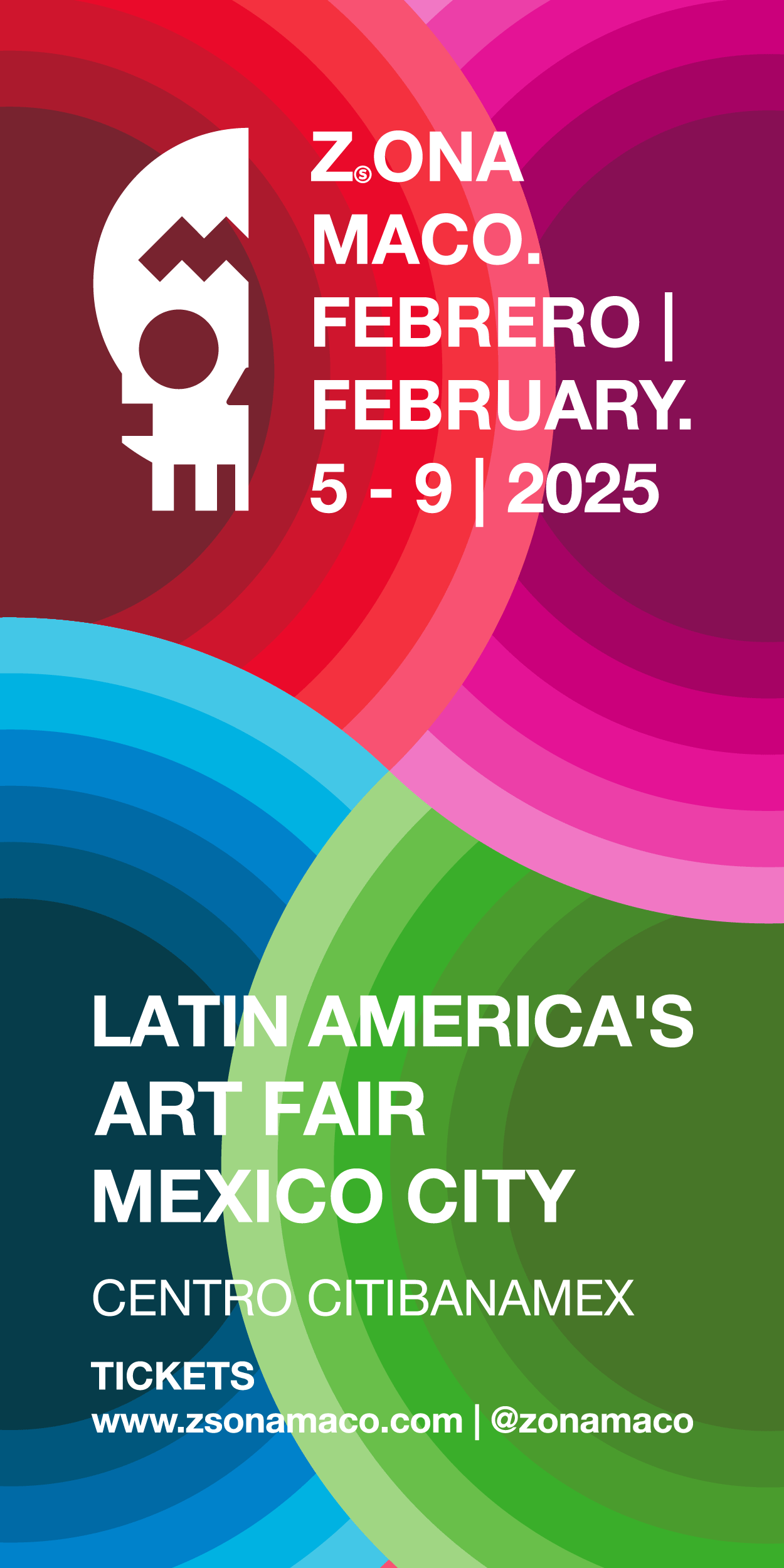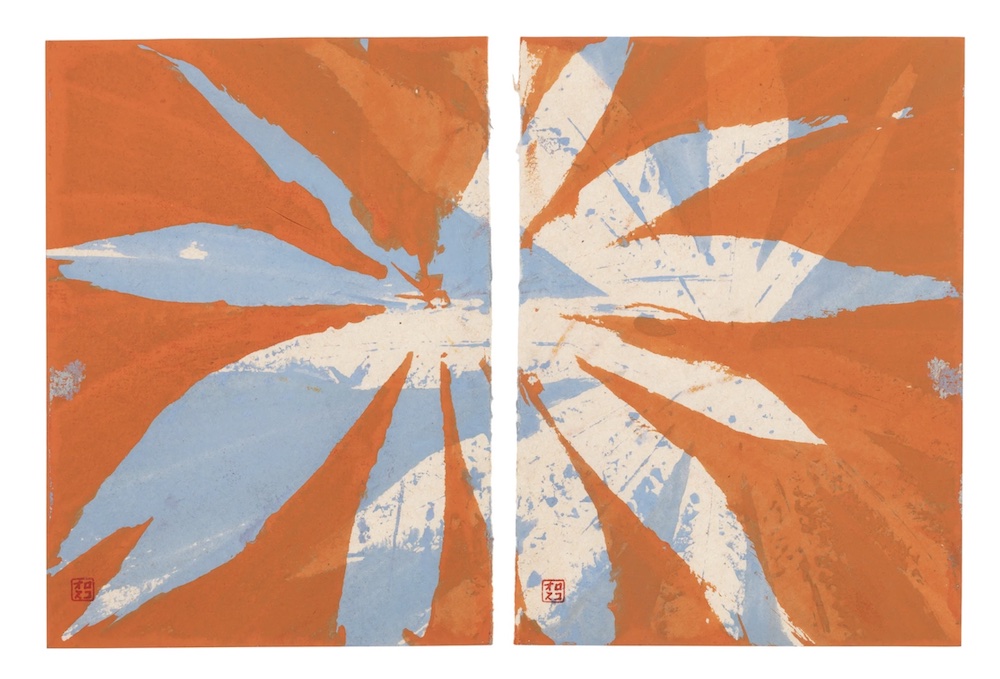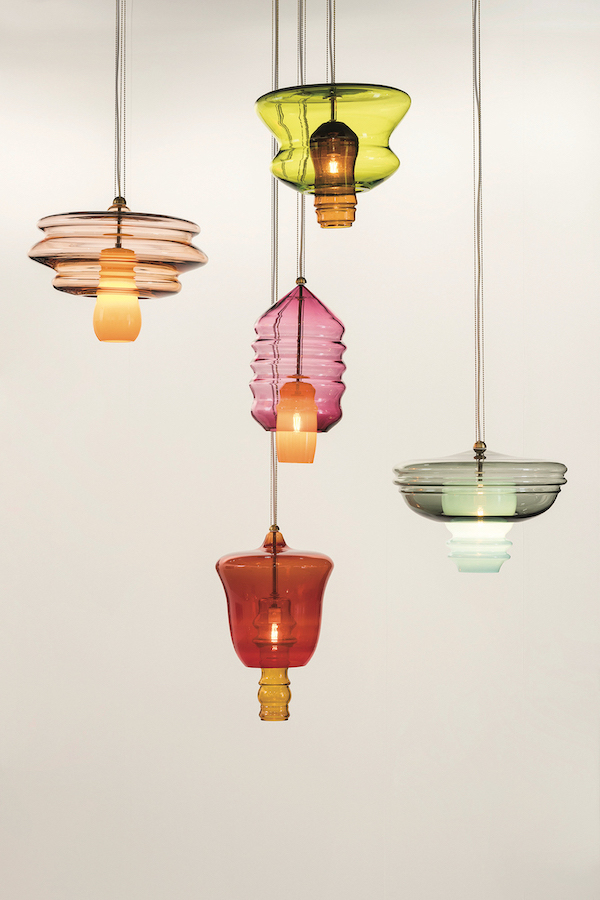Bárbara Sánchez-Kane Answers the Question, “Is it Fashion? Is it Art?”
In September, kurimanzutto in New York presents “New Lexicons for Embodiment” by Bárbara Sánchez-Kane. Open through October 21, the solo show begins with a pop-up of the artist’s latest fashion collection, followed by sculptural works that can be worn, deformed, or multiplied.
Sánchez-Kane, who uses she and he pronouns, trained in fashion and founded her label in 2016. From the beginning, he challenged the rules of the industry, ignoring the rigidity of set seasons, conformity of genders, even functionality of garments. We’d posit it has always been rooted in wearable art, performative posture, and an innate understanding of material—along with a wink to her audience. The girls (or guys) that get it, get it, as they say.
Her latest exploration of sculpture and medium is all about transformation. There are no rules for how to wear a piece, or likewise display it in your home. When we spoke with him earlier this year, he was experimenting with how an object in rawhide might be deconstructed and rebuilt or reused anew after losing its form from water being thrown on it. If it was chromed, would there be the same effect? That reverence for the malleability of form speaks to her desire to create spaces outside of fashion, outside of art, outside of the predetermined societal structures that confine individuals.
Sánchez-Kane spoke to us from his Mexico City studio about fashion, objects, and sculpture as both performance act and extension of herself.
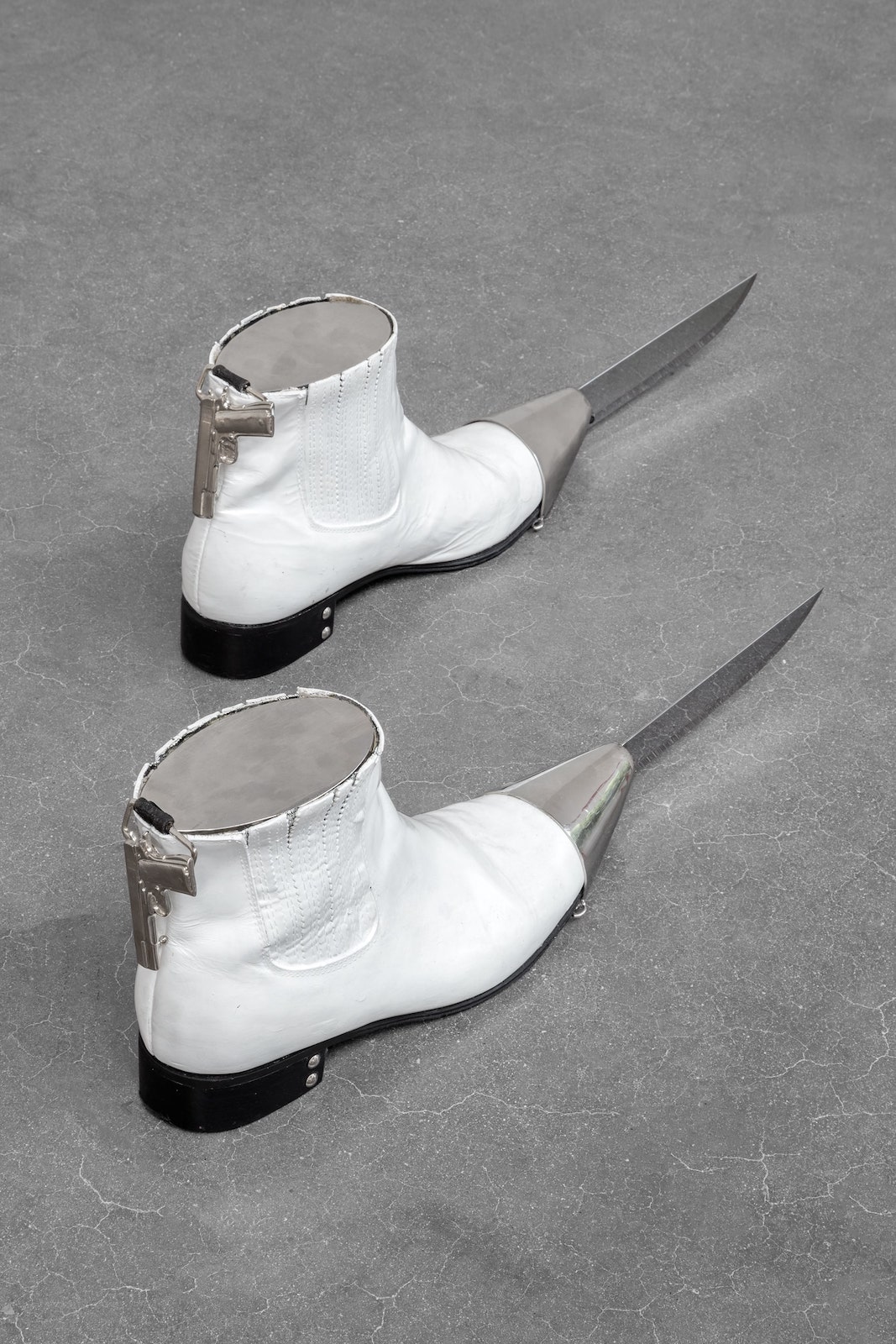 Bárbara Sánchez-Kane, “Botas Cuchillo,” 2019, boots, knives and stainless steel bushing, 18 x 8 x 50 cm, photo by Gerardo Landa Rojano, courtesy of the artist and kurimanzutto, Mexico City / New York.
Bárbara Sánchez-Kane, “Botas Cuchillo,” 2019, boots, knives and stainless steel bushing, 18 x 8 x 50 cm, photo by Gerardo Landa Rojano, courtesy of the artist and kurimanzutto, Mexico City / New York.
WHITEWALL: You studied engineering and then went to Florence to study fashion. You said that it was there in Italy that you realized how creativity has no boundaries. Once you arrived at that idea, how did that open up what you wanted to do creatively, whether in fashion or beyond?
BÁRBARA SÁNCHEZ-KANE: For me, growing up, fantasy was the opposite of reality. And now it’s more like the limit. At that point in Florence, it was me exploring fantasy for the first time without feeling bad about it. That’s when I started working on what I was thinking. Before that, I thought, “Why am I thinking this if I’m an engineer? You should be doing something else.” For me, that was very decisive to understand that fantasy is the border I want to climb up and use, and there is a way to explore it. I knew what fashion and art can give to you. It’s a means of exploration of this reality that becomes tangible, and then it can be something very ephemeral, too. That time when I realized that there was a purpose to that.
WW: While you trained in fashion, your work has never really stayed there. It’s expanded to performance, to sculpture, to video, to painting. Has that always been open for you?
BSK: I visualize my work, as nothing is static. That’s very queer. It moves in different directions. A lot of people ask me, “When will you open your shop?” My brand started in 2016. I just never felt like the correct moment because I would need to design clothes to have a store. It would put me in this place I don’t want to be. I don’t want to occupy a specific place or time if I don’t want to occupy that space or time in that given scenario.
“Fashion, clothing, sculpture—it’s all an extension of me…”—Bárbara Sánchez-Kane
WW: Right, you want to design a collection because you want to design a collection, not because you have an obligation to fill a store seasonally.
BSK: I like this idea of different directions. For me, I see the collections as a performance. It’s the same as presenting sculpture—I have 50 sculptures that are useable and you can move with them and you can use them and get dirty, and take to a dry cleaner and hang it in your closet again, or give it to a friend, or get rid of them, or sell them for a lower price online.
I like this idea of going back and forth, because everything climbs onto the other. Sculpture or clothing or doing a shoe or a bag—everything overlaps each other and creates these little fantasies and worlds that you invite other people to join.
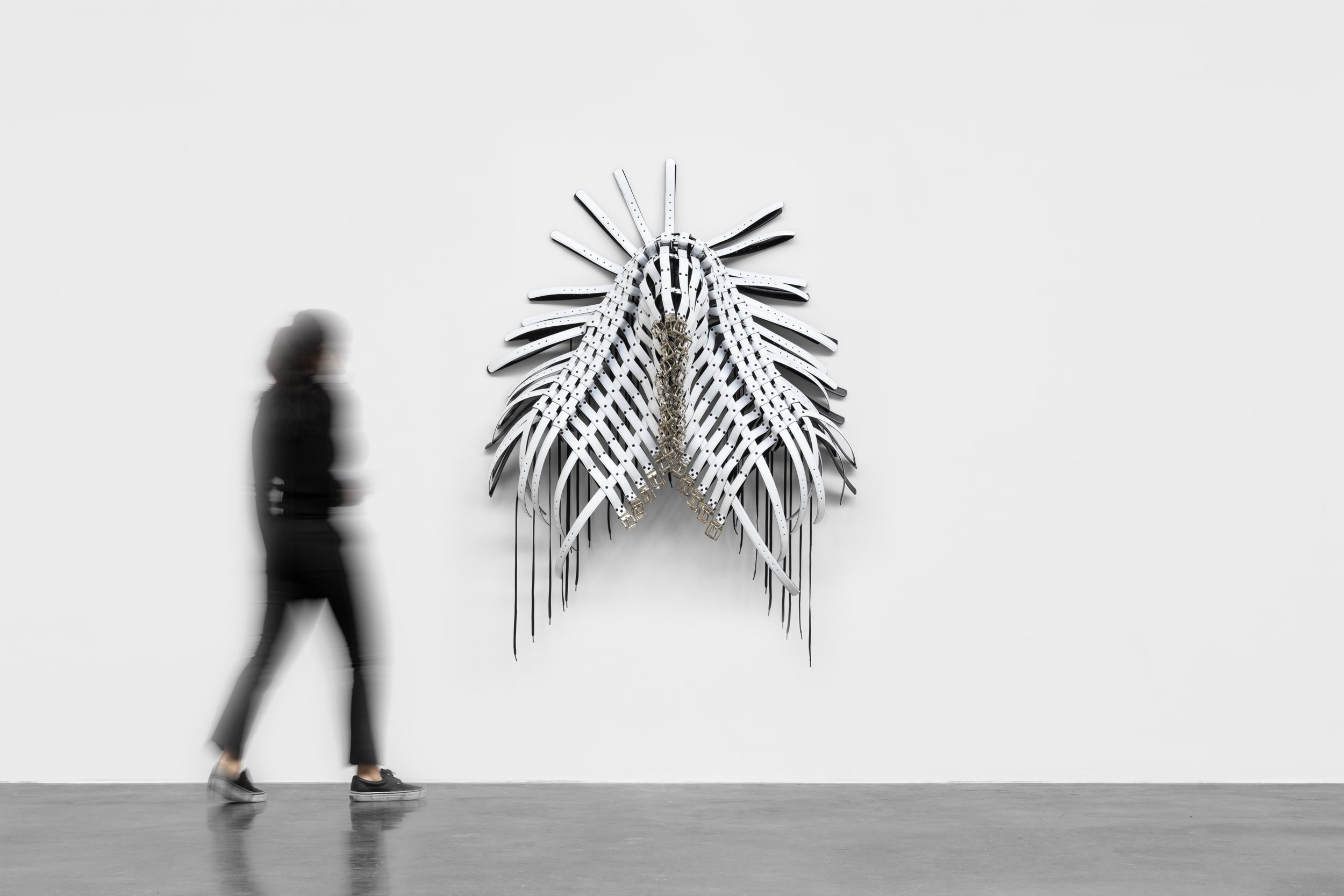 Bárbara Sánchez-Kane, “Estaciones cambiantes,” 2022, plastic, polyester, metal and flatbed print, 160 x 140 x 40 cm, photo by Gerardo Landa Rojano, courtesy of the artist and kurimanzutto, Mexico City / New York.
Bárbara Sánchez-Kane, “Estaciones cambiantes,” 2022, plastic, polyester, metal and flatbed print, 160 x 140 x 40 cm, photo by Gerardo Landa Rojano, courtesy of the artist and kurimanzutto, Mexico City / New York.
WW: Are there materials at the moment you’re drawn to?
BSK: I’ve been working a lot with rawhide. I was thinking about the skin and violence. You have this skin where you don’t know the gender, the age, the animal. And if you throw water you can melt the rawhide. It goes back to like a towel. And it’s the idea of being able to change. When we grow up, it’s about what is accepted or who is accepted to grieve, or who is accepted to desire, or who is accepted to be a human. These rawhides literally melt and become nothing and you can use them again to mold something else. The only thing that will always stay is the odor. This is what I try to live in, understanding that things are not static, and today I want this and then tomorrow nothing is defined.
I did this exploration of what would happen if I chromed the rawhide. The interesting thing about chroming is there is a thin line to being very bad art. And I love it. I have chromed a lot of things and I love this line of is this going to be good? Is this going to be horrendous? The distortion is good. Again, I was addressing the collapse—what if I give you this amazing sculpture of metal, and then there’s a show going on, and this metal piece collapses in your face? Without using anything but water. And what happens to the silver? Will it come out? Is it going to stay? Can I make jewelry with it? What is the endpoint?
WW: Is that how you work, totally open to experiment with what happens when you try new things?
BSK: I think there is something very beautiful about drawing, sketching, notes, and turning that into a reality. And if you don’t find how to do it, then finding another way. But then in the accident is when you find the beautiful part of things.
Fashion, clothing, sculpture—it’s all an extension of me, an extension of what I’m feeling or who am I surrounding myself with. There is desire, there is pain, there is melancholy, and all these factors leave you changed, and end up in what you are working on.
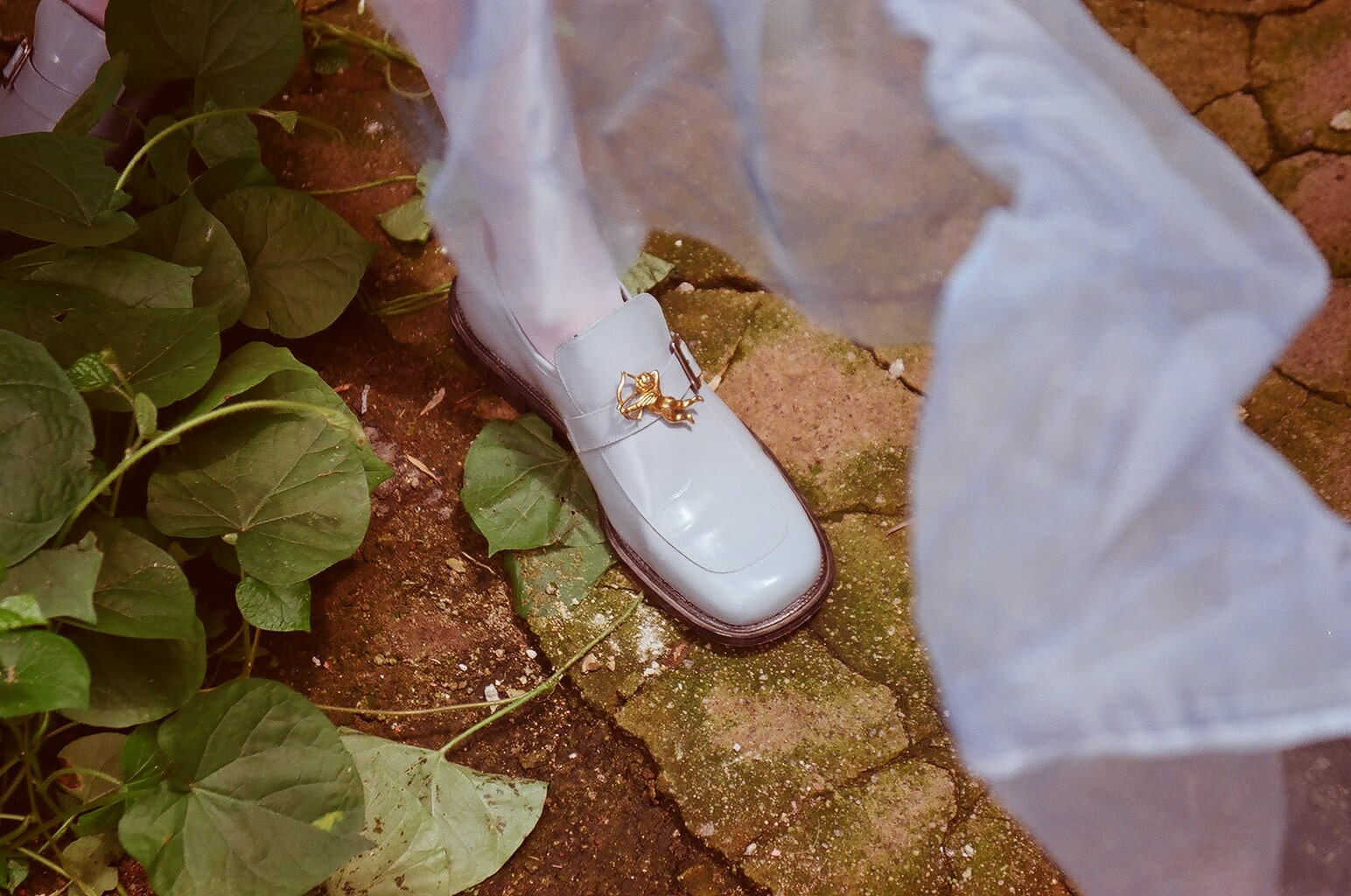 Bárbara Sánchez-Kane, still from “Prêt-à-Patria,” 2021; high-definition digital video (color, sound), 9:30 minutes, courtesy of the artist and kurimanzutto, Mexico City / New York.
Bárbara Sánchez-Kane, still from “Prêt-à-Patria,” 2021; high-definition digital video (color, sound), 9:30 minutes, courtesy of the artist and kurimanzutto, Mexico City / New York.

